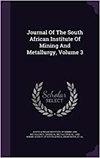Production of Al(HI)-K(I)-Ti(IV)-sulphate-containing leach liquor from metakaolinite-containing ash derived from South African coal fines
IF 0.9
4区 材料科学
Q3 Materials Science
Journal of The South African Institute of Mining and Metallurgy
Pub Date : 2022-09-20
DOI:10.17159/2411-9717/1154/2022
引用次数: 0
Abstract
South African discard coal fines and K2CO3 blends were heated in a laboratory-scale rotary kiln to produce ashes for H2SO4 leaching tests. The optimized H2SO4 leaching conditions of 6.12 mol.dm3 (M) H2SO4, solid to liquid ratios 1:5 and 1:10, and 8o°C for 8 hours were used. K2CO3 was added to increase the dissolution efficiency of K. The objective was to determine if the Al present in metakaolinite (Al2O3.2SiO2), the Al, K, and Ti in the alumino-silicate glasses, and the Ti in rutile (TiO2) in the ashes could be selectively dissolved in H2SO4. XRF results show that the ashes formed at 700°C dissolved more efficiently (87% Al, 89% K and 23% Ti) compared to the ashes formed at 1050°C. This can be attributed to the presence of Al2O3.2SiO2, K2CO3 melt, K2CO3 remnants, KAl(SO4)2, and K-aluminosilicate glass in these ashes. XRD results indicate that the ashes prepared at 1050°C contained anorthite (CaAl^Og), microcline (KAlSi3O8), pseudomullite (Al2.SiO2), and silicon spinel (2Al2O3.3SiO2), which are either insoluble or only sparingly soluble in H2SO4. These minerals resulted in the lower dissolution efficiencies of Al and K. Based on the high dissolution efficiencies of Al and K for the ashes produced at 700°C, coal fines blended with K2CO3 could possibly be utilized as feedstocks for the production of aluminium(III), potassium(I), and titanium(IV) and a sulphate-containing leach liquor. Furthermore, the environmental issues and costs associated with the handling and disposal of large volumes of coal fines will also be resolved.用南非细粒含偏高高岭石的灰生产含Al(HI)-K(I)-Ti(IV)-硫酸盐的浸出液
南非废弃煤粉和K2CO3混合物在实验室规模的回转窑中加热,以产生用于H2SO4浸出试验的灰烬。采用6.12 mol.dm3(M)H2SO4,固液比为1:5和1:10,在8°C下浸出8小时的优化H2SO4浸出条件。添加K2CO3以提高K的溶解效率。目的是确定存在于偏高高岭石(Al2O3.2SiO2)中的Al、铝硅酸盐玻璃中的Al,K和Ti以及灰烬中金红石(TiO2)中的Ti是否可以选择性地溶解在H2SO4中。XRF结果表明,与1050°C下形成的灰烬相比,700°C下生成的灰烬溶解效率更高(87%的Al、89%的K和23%的Ti)。这可归因于这些灰烬中存在Al2O3.2SiO2、K2CO3熔体、K2CO3残留物、KAl(SO4)2和K-铝硅酸盐玻璃。XRD结果表明,在1050°C下制备的灰烬中含有钙长石(CaAl^Og)、微斜长石(KAlSi3O8)、假莫来石(Al2.SiO2)和硅尖晶石(2Al2O3.3SiO2),它们不溶于或仅微溶于H2SO4。这些矿物导致Al和K的溶解效率较低。基于Al和K对700°C下产生的灰烬的高溶解效率,与K2CO3混合的煤粉可能被用作生产铝(III)、钾(I)和钛(IV)的原料以及含硫酸盐的浸出液。此外,与处理和处置大量煤粉相关的环境问题和成本也将得到解决。
本文章由计算机程序翻译,如有差异,请以英文原文为准。
求助全文
约1分钟内获得全文
求助全文
来源期刊
CiteScore
1.50
自引率
11.10%
发文量
61
审稿时长
4-8 weeks
期刊介绍:
The Journal serves as a medium for the publication of high quality scientific papers. This requires that the papers that are submitted for publication are properly and fairly refereed and edited. This process will maintain the high quality of the presentation of the paper and ensure that the technical content is in line with the accepted norms of scientific integrity.

 求助内容:
求助内容: 应助结果提醒方式:
应助结果提醒方式:


